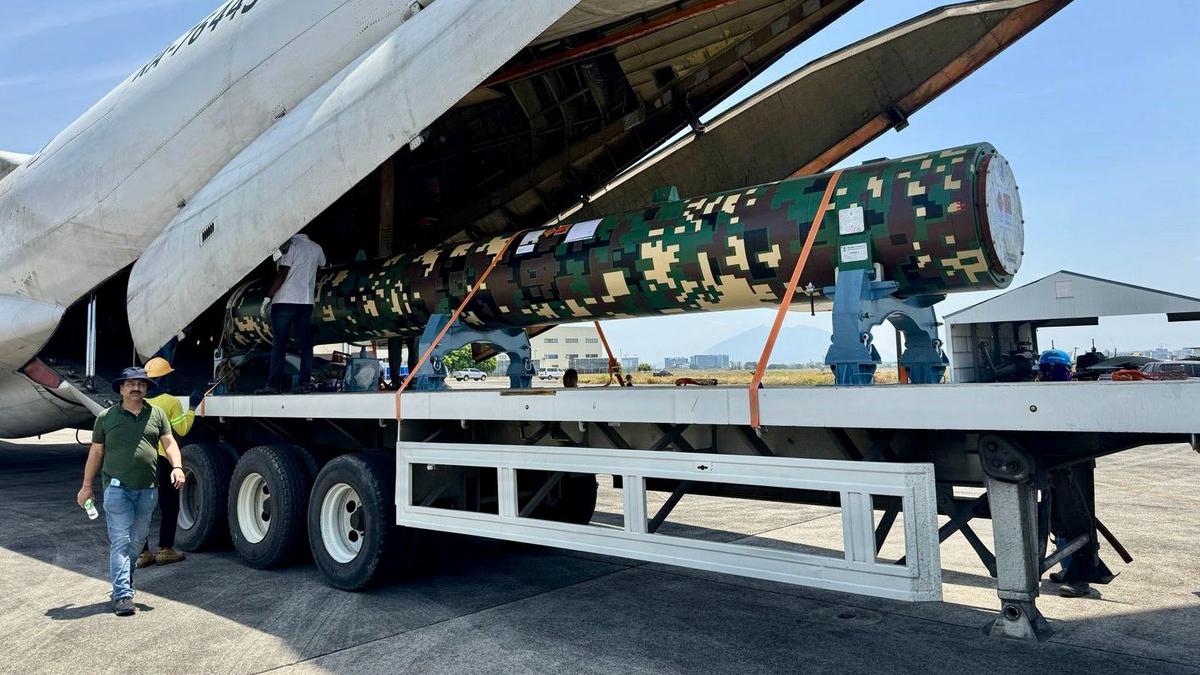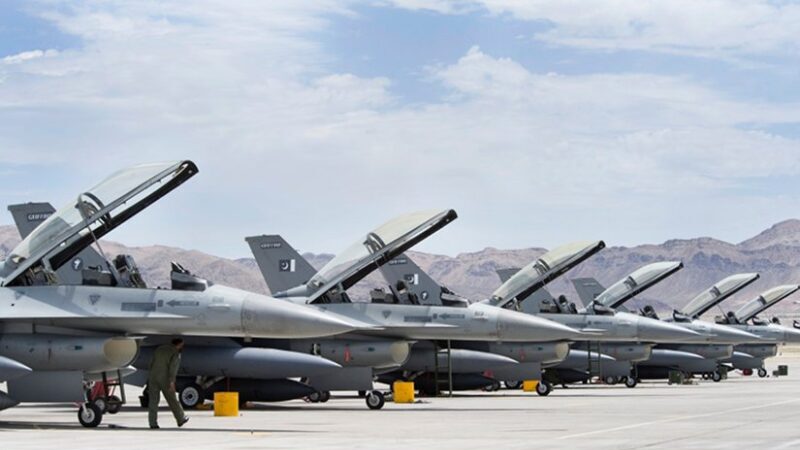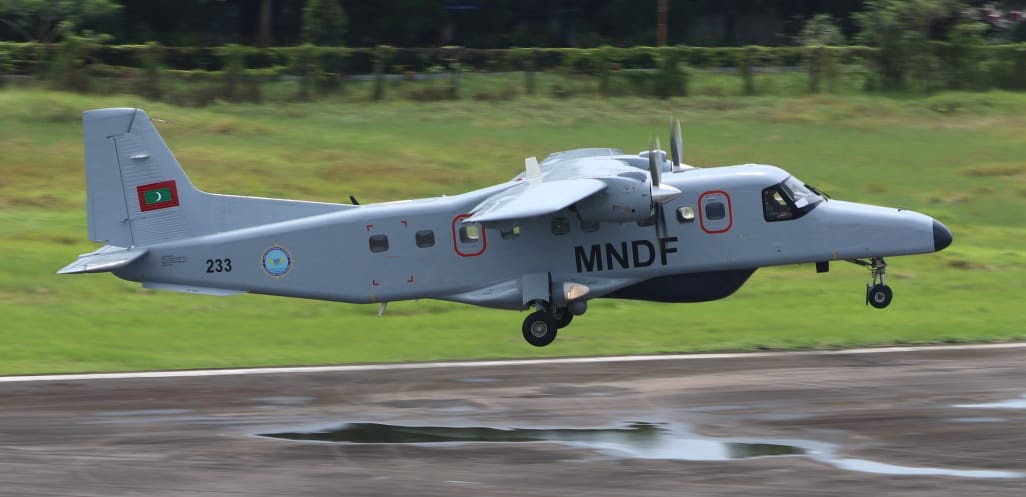SOURCE: AFI

Paras Defence and Space Technologies Limited has announced a significant expansion in its defense manufacturing capabilities, having obtained a pivotal license from the Department for Promotion of Industry and Internal Trade (DPIIT). The license, granted under the Arms Act, 1959, authorizes the company to produce the MK-46 and MK-48 belt-fed Light Machine Guns (LMGs). This development marks a notable milestone for Paras Defence, enhancing its strategic position within India’s defense sector.
The MK-46 and MK-48 LMGs are recognized for their advanced and modernized design, offering enhanced firepower and reliability. With this license, Paras Defence is now permitted to manufacture 6,000 units of each model annually, providing a significant boost to the company’s production capacity and its role in national defense.
Continue readingSOURCE: AFI

In an impressive display of military might, the Philippine Marine Corps (PMC) has released a video that highlights its newly acquired BrahMos missile systems, marking a significant upgrade to the country’s coastal defense capabilities. The video, which has stirred considerable interest both domestically and internationally, underscores the strategic shift towards enhanced maritime security in the face of regional challenges.
The BrahMos missile, known for its supersonic speed and precision, has been described as a game-changer in the realm of anti-ship and land attack capabilities. Developed through a joint venture between India’s DRDO and Russia’s NPO Mashinostroyeniya, the BrahMos is renowned for its speed of Mach 2.8 and a range of approximately 290 kilometers in its export version. The PMC’s acquisition of this system is part of a broader initiative to bolster the Philippines’ defense posture, particularly in the contested waters of the South China Sea.
Continue readingSOURCE: AFI

In a notable advancement for India’s aerospace engineering sector, Delhi-based DG Propulsion Private Limited (DPPL) has successfully executed a vertical test run of its indigenous DG J40 micro jet engine. This achievement not only underscores India’s growing capabilities in aerospace technology but also sets the stage for future innovations, particularly in the realm of manned jetpack systems.
The DG J40, designed for unmanned aerial vehicles (UAVs) and defense applications, boasts a thrust capacity of up to 40 kgf, making it the most potent engine in DPPL’s current lineup. The vertical test run was a rigorous trial, pushing the engine through various operational challenges including fluctuating throttle settings and rapid RPM changes. This test not only confirmed the engine’s reliability but also its potential for diverse applications beyond traditional UAVs.
Continue readingSOURCE: AFI

In a significant stride towards enhancing the self-sufficiency of Indian peacekeeping forces abroad, the Indian contingent deployed in Lebanon under the United Nations Interim Force in Lebanon (UNIFIL) has been equipped with Indian-manufactured Quick Reaction Force (QRF) vehicles for the first time. These vehicles, crafted by Tata Motors, are slated to be delivered to the Indian battalion on Army Day, celebrated on January 15.
Currently, around 900 Indian troops in Lebanon utilize Swedish-made Sisu vehicles, which have been provided under the UN’s dry lease system. Under this arrangement, the United Nations is responsible for supplying all necessary equipment, including vehicles and weaponry, while the troop-contributing countries like India provide the personnel. This is in contrast to the wet lease system employed in other missions where Indian battalions bring their own equipment.
Continue readingSOURCE: RAUNAK KUNDE / NEWS BEAT / IDRW.ORG

In a revealing conversation with idrw.org, an Indian Navy official stated that the Rafale M, which the Indian Navy plans to acquire from France, significantly outclasses China’s modernized J-15B and J-15D carrier-based combat aircraft in all combat capabilities. This assessment comes amidst ongoing evaluations of naval aviation assets and their strategic implications in the Indian Ocean Region.
The Rafale M, a naval variant of the renowned French Rafale fighter, is designed specifically for carrier operations and is equipped with advanced avionics, weaponry, and a robust airframe suited for the rigours of naval combat. According to Navy officials, the J-15B and J-15D, derivatives of the Soviet-era Sukhoi Su-33, still grapple with numerous inherited design issues that have not been fully resolved despite significant Chinese investment.
Continue readingSOURCE: RAUNAK KUNDE / NEWS BEAT / IDRW.ORG

The Aeronautical Development Agency (ADA) might be exploring the addition of a second seat to the Advanced Medium Combat Aircraft (AMCA), India’s ambitious 5.5-generation stealth fighter, specifically to control combat drones. This intriguing development was hinted at in a conversation with idrw.org, where an ADA official neither confirmed nor denied the possibility of a two-seater AMCA variant emerging in the future.
Contrary to conventional two-seat aircraft used for training or conversion purposes, the IAF has not explicitly requested a two-seater AMCA for these reasons. Instead, the discussion revolves around operational enhancements, particularly in drone management.
Continue readingSOURCE: RAUNAK KUNDE / NEWS BEAT / IDRW.ORG

India’s ambitious Advanced Medium Combat Aircraft (AMCA) program is poised to take a significant leap forward with the expected finalization of a contract for the joint development of a 6th generation jet engine. The French aerospace company, Safran, has emerged as the frontrunner in this high-stakes collaboration, although both Rolls-Royce from the UK and General Electric (GE) from the US remain keen contenders for this partnership.
According to sources familiar with the matter, speaking to idrw.org, the program is estimated to cost around $5 billion. This substantial investment will not only fund the engine’s development but also cover the establishment of a local production line in India. The funds will facilitate the creation of prototypes and support extensive ground and inflight testing phases, ensuring the engine meets the rigorous demands of modern combat aircraft.
Continue readingSOURCE: AFI

@ang3lkenny
The Defence Research and Development Organisation (DRDO) is set to captivate audiences at the upcoming Aero India 2025 with the showcase of a scale model of the Uttam Active Electronically Scanned Array (AESA) Radar, designed specifically for integration into the Tejas MkI and MkII programs. This event, scheduled to take place in Bengaluru, will be a significant platform for displaying India’s strides in indigenous defense technology.
The Uttam AESA Radar represents a leap forward in radar technology, offering advanced capabilities for India’s light combat aircraft, the Tejas. Developed by the Electronics and Radar Development Establishment (LRDE), a DRDO laboratory, the radar is engineered to provide superior air-to-air, air-to-ground, and air-to-sea operational modes. With features like multi-target tracking, electronic counter-countermeasures (ECCM), and low probability of intercept (LPI), the Uttam radar is poised to enhance the combat effectiveness of the Tejas fighter jets significantly.
Continue readingSOURCE: AFI

At the 21st Subroto Mukerjee Seminar, Indian Air Force Chief Air Chief Marshal A.P. Singh voiced his frustration over the ongoing delay in the delivery of the first 40 Tejas aircraft, despite the order being placed well over a decade ago. The comments come at a time when regional adversaries, particularly China, are rapidly enhancing their aerial warfare capabilities, with reports confirming China’s recent test flight of a highly advanced sixth-generation fighter jet.
This scenario has sparked discussions and reactions beyond India’s borders, particularly among Pakistani social media users on X (formerly Twitter), where some handles, reportedly backed by Pakistan’s ISI (Inter-Services Intelligence), have been quick to exploit the situation. These accounts have provocatively suggested that India’s current state of fighter jet procurement could be an opportunity for Pakistan to initiate conflict to “reclaim” Kashmir, overlooking several critical strategic and economic realities.
Continue readingSOURCE: AFI

Lockheed Martin announced on January 6 via a social media post that it delivered 110 F-35 jets in 2024, hitting the upper limit of a revised production target. This number reflects a significant adjustment from the company’s initial goal of delivering 156 jets annually, a commitment made only a few years prior. The reduction in the delivery target was primarily due to delays in certifying the Block 4 software for the newly installed Technology Refresh (TR)-3 avionics system.
The F-35 Joint Strike Fighter program, one of the most ambitious in military aviation history, has faced several hurdles. Among these, the certification of the TR-3 avionics upgrade, which was supposed to enhance the jet’s capabilities significantly, proved to be a bottleneck. The Joint Program Office (JPO) halted acceptance of TR-3-equipped jets starting in July 2023, leading to a delivery hiatus that lasted until the end of last July. During this period, Lockheed Martin managed to deliver a limited number of F-35s with the older TR-2 avionics, but the overall production schedule was undeniably disrupted.
Continue readingSOURCE: AFI

In a significant move to bolster defence relations between India and the Maldives, Indian Defence Minister Rajnath Singh and Maldives Defence Minister Mohammed Ghassan Maumoon held pivotal talks in New Delhi on Wednesday. These discussions were aimed at infusing new “vigour” into the defence cooperation between the two nations, with a strong emphasis on enhancing maritime security, information exchange, and the capability-building of the Maldives National Defence Forces (MNDF) through focused training initiatives.
The primary objective of the talks was to deepen cooperation in areas that are crucial for both countries’ security interests, particularly maritime security. The Indian Ocean, being a vital strategic and economic zone, is a key area of concern for both nations. The discussions were centered on how to strengthen maritime surveillance, share critical information, and increase interoperability between the armed forces of the two nations, especially in light of the growing security challenges in the region.
Continue readingSOURCE: IDRW.ORG

Air Chief Marshal Amar Preet Singh, the current Chief of the Air Staff of the Indian Air Force (IAF), has openly criticized the pace and approach towards indigenous Aircraft manufacturing in India. Speaking recently, he highlighted the slow and often painful process of designing, developing, and manufacturing Aircraft within the country. His comments have sparked a broader conversation about the need for a more dynamic and aggressive strategy in defense production.
During his remarks, Air Chief Marshal Singh pointed out the inherent delays in the development cycle of indigenous projects. “Everything being designed, developed, manufactured within the country, it is a slow process, it is a painful process,” he stated, underscoring the challenges faced by the IAF and other defense sectors in achieving self-reliance.
Continue readingSOURCE: IDRW.ORG

In a move prompted by safety concerns, the entire fleet of around 330 Dhruv Advanced Light Helicopters (ALHs) used by the Indian Armed Forces has been temporarily grounded following a tragic crash in Porbandar on Sunday. The incident claimed the lives of two pilots and an aircrew diver, highlighting ongoing issues with the aircraft’s safety record.
The crash has reignited discussions about the reliability and safety of the domestically produced Dhruv helicopters. A senior team from Hindustan Aeronautics Limited (HAL), the manufacturer of the ALH, has been dispatched to investigate the recent accident. However, criticisms regarding HAL’s approach to addressing these recurring problems have surfaced.
Continue readingSOURCE: AFI

Hindustan Aeronautics Limited (HAL) has announced plans to conduct an independent review and engage consultancy services aimed at modifying its prototype helicopters to reduce noise levels. The primary goal is to attenuate noise by at least 10 to 15 dB in the critical frequency range of 500 to 8000 Hz to comply with the MIL-STD-1474 D military noise specifications.
This move comes after noise level measurements were carried out inside the cockpit and cabin of one of HAL’s Light Utility Helicopter (LUH) prototypes during developmental flight tests. The tests revealed that the noise levels were exceeding MIL-STD-1474 D limits, particularly in the 500 to 8000 Hz frequency band, which is highly sensitive to the human ear and critical for both comfort and operational safety.
Continue readingSOURCE: AFI

In the rapidly evolving landscape of global aerospace technology, India’s Aeronautical Development Agency (ADA) stands at a pivotal moment. The concept of a ‘Skunk Works’, a term popularized by Lockheed Martin for its Advanced Development Programs, represents a model of innovation where small, agile teams work with considerable autonomy to develop cutting-edge projects. Here’s why India needs to establish its version of Skunk Works within the ADA, dedicated to next-generation aerospace programs, with direct funding and oversight from the Prime Minister’s Office (PMO).
Traditional bureaucratic structures often slow down innovation due to red tape and slow decision-making processes. A dedicated Skunk Works within ADA would operate with the agility necessary to match the pace of global competitors like the USA, Russia, and China, who already employ similar models for rapid prototyping and development.
Continue reading